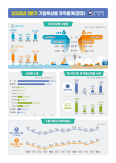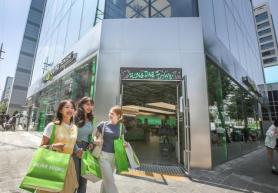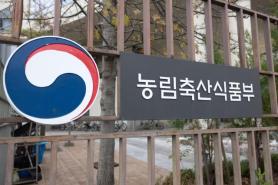![Containers stacked at Pyeongtaek Port in Gyeonggi Province. [Photo=Yonhap News]](https://image.ajunews.com/content/image/2025/10/01/20251001093748376021.jpg)
SEOUL, October 01 (AJP) - South Korea’s exports surged nearly 13 percent in September from a year earlier, extending growth for the fourth straight month on strong demand for semiconductors and automobiles, despite tariff-related setbacks in the United States.
According to the Ministry of Trade, Industry and Energy, outbound shipments totaled $65.95 billion, up 12.7 percent on-year and the highest monthly tally since March 2022.
For the July–September period, exports rose 6.6 percent to a record $185.03 billion, lifting cumulative shipments for the first nine months of the year by 2.2 percent to $519.78 billion. Officials noted that September gains partly reflected more working days, as the Chuseok holiday fell in the same month last year. On an average daily basis, exports slipped to $2.93 billion from $2.75 billion a year ago.
Semiconductor shipments jumped 22 percent to $16.61 billion, powered by demand for AI servers and high-value memory products. Automobile exports, including electric and hybrid vehicles, gained 16.8 percent to $6.4 billion, while vessel exports climbed 22 percent to $2.89 billion, marking a seventh consecutive month of growth.
Bio products and displays posted record September sales, while agricultural and cosmetic products also hit all-time highs, buoyed by the global popularity of Korean food and beauty items. By contrast, petrochemical and steel exports edged down on weak oil prices and global oversupply.
Exports to the United States slipped 1.4 percent to $10.27 billion, dragged by a 2 percent fall in car sales. Shipments to China inched up 0.5 percent to $11.68 billion, ending a four-month slide, while most other regions recorded growth.
Imports increased 8.2 percent to $56.39 billion, with energy purchases down 8.8 percent but non-energy imports up 12.5 percent. The monthly trade surplus widened to $9.56 billion, the largest for September since 2018. For the year to date, the surplus reached $50.47 billion, up $13.85 billion from a year earlier.
“The robust trade results are meaningful, as they were achieved despite external headwinds such as U.S. trade barriers,” Trade Minister Kim Jung-kwan said.
* This article, published by Aju Business Daily, was translated by AI and edited by AJP.
Copyright ⓒ Aju Press All rights reserved.



